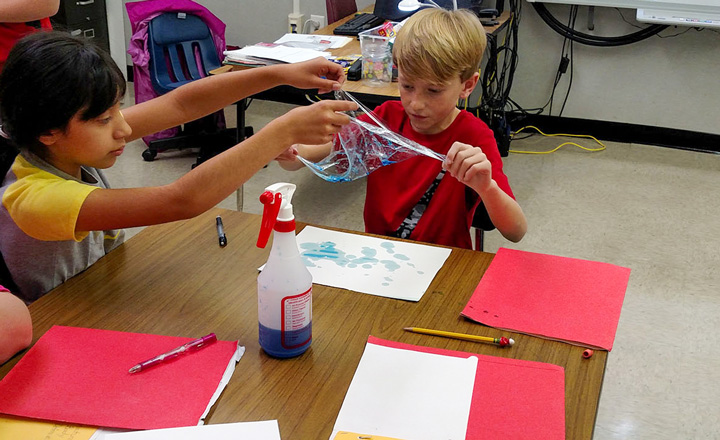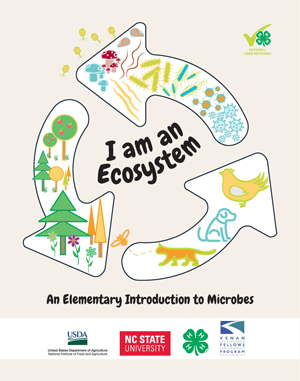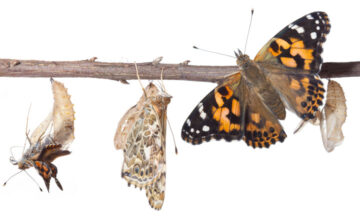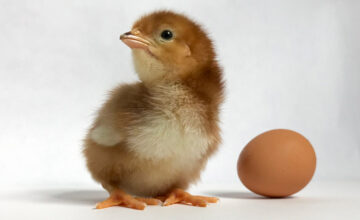
Curriculum Summary
I Am an Ecosystem introduces youth to the invisible world of microbes. Through this curriculum, youth engage in hands-on activities across six lessons to explore the importance of microbes to healthy ecosystems, healthy food, and healthy bodies. A comic book, slide decks, differentiated recording sheets, and family take-home activities are included to support youth throughout the unit.
Age range: 9-11
Grade level: 5/Elementary
We always look for ways to enhance our curriculum. The comic book in lesson 1 now has a video version in addition to the print version.
Microbes All-Around and Inside Us
North Carolina Essential Standards in Science:
- 5.L.2.3- Infer the effects that may result from the interconnected relationship of plants and animals to their ecosystem.
- 5-LS2-1 Develop a model to describe the movement of matter among plants, animals, decomposers, and the environment.
Youth develop a KWL chart and read a comic book that introduces key terms and concepts for the unit. Afterward, they set up an experiment to investigate microbial growth over the course of the unit.
The Role of Microbes in an Ecosystem
North Carolina Essential Standards in Science:
- 5.L.2.2 Classify the organisms within an ecosystem according to the function they serve: producers, consumers, or decomposers (biotic factors)
- 5.L.2.3 Infer the effects that may result from the interconnected relationship of plants and animals to their ecosystem.
Common Core State Standards
- CCSS.ELA-Literacy.W.5.1 Write opinion pieces on topics or texts, supporting a point of view with reasons and information.
Next Generation Science Standards
- 5-LS2-1. Develop a model to describe the movement of matter among plants, animals, decomposers, and the environment
Youth simulate an ecosystem to explore relationships among producers, consumers, and decomposers. Afterward, they observe their ongoing experiment from Lesson 1 and record their observations.
The Ecosystems Inside Us
North Carolina Essential Standards in Science:
- 5.L.1 Understand how structures and systems of organisms (to include the human body) perform functions necessary for life.
- 5.P.2 Understand the interactions of matter and energy and the changes that occur.
Next Generation Science Standards:
- 5-LS2-1. Develop a model to describe the movement of matter among plants, animals, decomposers, and the environment.
- 5-PS1-1: Develop a model to describe that matter is made of particles too small to be seen.
Youth distinguish between chemical and physical changes as they use yeast and molasses to explore the role microbes play in digestion. Afterward, youth continue to make and record observations for their microbial growth experiment.
The Body’s Natural Defenses
North Carolina Essential Standards in Science:
- 3.L.1.2 Explain why skin is necessary for protection and for the body to remain healthy.
- 5.L.1 Understand how structures and systems of organisms (to include the human body) perform functions necessary for life.
Youth complete three lab stations to simulate how our skin, mucous membranes, and airway passages help protect us from pathogens. They continue to make and record observations for their microbial growth experiment.
CSI Bacteria
Common Core State Standards in English/Language Arts
- CCSS.ELA-Literacy.RI 5.3 Explain the relationships or interactions between two or more individuals, events, ideas, or concepts in a historical, scientific, or technical text based on specific information in the text.
- CCSS.ELA-Literacy.W.5.1 Write opinion pieces on topics or texts, supporting a point of view with reasons and information.
- CCSS.ELA-Literacy.RI 5.7 Draw on information from multiple print or digital sources, demonstrating the ability to locate an answer to a question quickly or to solve a problem efficiently.
Youth investigate an epidemiological mystery as they try to figure out which pathogen made Sam E. sick. Afterward, they complete their microbial growth experiments and draw conclusions about conditions that inhibit or encourage microbial growth.
Engineering a Solution: Defense in Food Safety
North Carolina Essential Standards in Science:
- 5.L.1 Understand how structures and systems of organisms (to include the human body) perform functions necessary for life.
Common Core State Standards in English/Language Arts
- ELA-Literacy.SL.5.1 Engage effectively in a range of collaborative discussions (one-on-one, in groups, and teacher-led) with diverse partners on grade 5 topics and texts, building on others’ ideas and expressing their own clearly.
- ELA-Literacy.SL.5.1b Follow agreed-upon rules for discussions and carry out assigned roles.
- ELA-Literacy.SL.5.1d Review the key ideas expressed and draw conclusions in light of information and knowledge gained from the discussions.
Next Generation Science Standards:
- 3-5-ETS1-1.Define a simple design problem reflecting a need or a want that includes specified criteria for success and constraints on materials, time, or cost.
- 3-5-ETS1-2.Generate and compare multiple possible solutions to a problem based on how well each is likely to meet the criteria and constraints of the problem.
Youth work together to develop and prototype a water filtration device using recycled materials.




